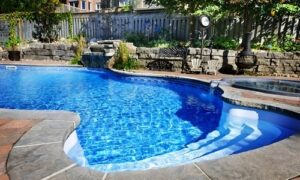A clear, shiny pool full of water is the best way to relax and feel fancy. In the background, a key person makes sure your swimming pool water stays clean – this is done through the use of a filtration system for pools. Knowing how pool filters work is very important for keeping a clean and safe swimming area. In this big guide we’ll go into the details of how a pool is cleaned, making it easier to understand. This will help you make better choices about looking after your pool.
The Basics of Pool Filtration
Every good system for pool cleaning uses the basic idea of getting rid of garbage and dirt from water. Pool filters are very important in keeping water clean for swimming. They catch things like leaves and tiny bits, making sure the water stays clear and safe to swim in.
Types of Pool Filters
There are three primary types of pool filters: They use sand filters, cartridge filters and dirt from tiny creatures called diatoms to clean water. Each kind works on different ways but they all have the same goal of making water clean.
Sand Filters: One of the most used, sand filters use a layer of carefully sized sand to catch dirt and germs. As water moves through the filter, dirt gets stuck in the sand. This lets only clean water go back to the pool.
Cartridge Filters: Cartridge filters use a replaceable fabric or paper cartridge to catch dirt and contaminants. These screens give better protection for tiny bits and are simple to keep up – just take out and wash the cartridge now and then.
Diatomaceous Earth (DE) Filters: DE filters use a fine powder called diatomaceous earth to filter things. The powder covers a network inside the filter, catching even small particles. DE filters offer the best filtration but need more careful care.
Filtration Process
Regardless of the filter type, the filtration process generally involves three stages: filtration, backwashing, and rinsing.
Filtration: Here, pool water goes into the filter to catch dirt using sand or another material. The clean water goes back to the swimming pool.
Backwashing: The filter gets blocked with trash over time, making it work less well. In the cleaning part, the water moves in reverse and gets rid of trapped dirt. This is an important step to keep the filter working well.
Rinsing: After cleaning, the filter needs a wash cycle to even out the dirt in it and make sure it works right. Water gets a quick wash to get rid of any leftover trash, then it goes back through the system for purification.
Picking the Ideal Filter for Your Swimming Pool
To choose the best filter for your pool, you need to consider things like how big it is and what it’s used for along with personal care choices. Sand filters are cheap and good for most home swimming pools. Cartridge filters give strong cleaning of smaller dirt pieces. DE filters are great for people who want the cleanest water possible, but they need more work to keep them in good shape.
Maintenance Tips for Optimal Performance
It’s important to regularly take care of your pool filter so it works really well. Look at the pressure gauge often, because a higher reading might mean that there is something blocking it. Clean and rinse the filter when needed, change or clean cartridges as suggested by maker’s rules. Also, making sure water in the pool is right and cleaning its surface often can help make it easier for the filter to work.



































